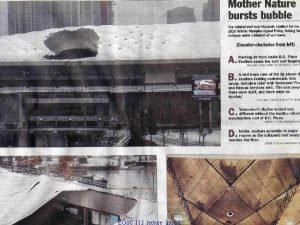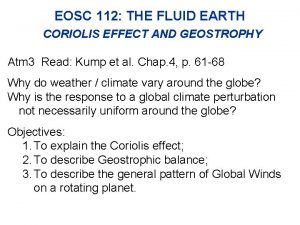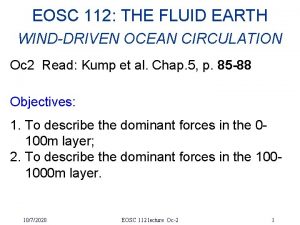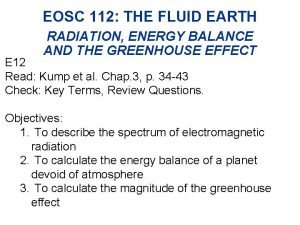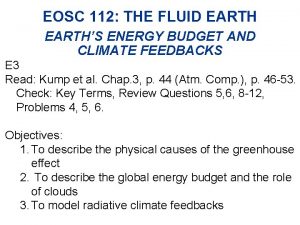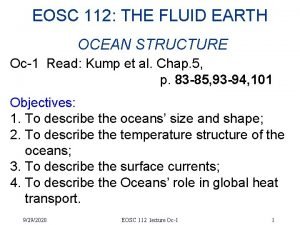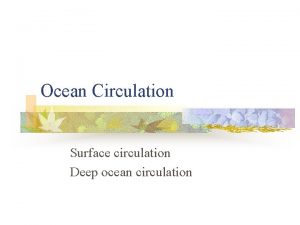EOSC 112 THE FLUID EARTH WINDDRIVEN OCEAN CIRCULATION








- Slides: 8

EOSC 112: THE FLUID EARTH WIND-DRIVEN OCEAN CIRCULATION Oc 2 Read: Kump et al. Chap. 5, p. 85 -88 Objectives: 1. To describe the dominant forces in the 0100 m layer; 2. To describe the dominant forces in the 1001000 m layer. 10/7/2020 EOSC 112 lecture Oc-2 1

1. Forces in the top layer (0 -100 m) • Nansen (1890 s) observed icebergs moving 20 -40 o to right of wind. • Ekman (1905) solution has surface current at 45 o to right of wind in Northern Hem. (to the left in S. Hem. ) (again… Coriolis effect). 10/7/2020 EOSC 112 lecture Oc-2 2

Upwelling & Downwelling • Wind blowing alongshore can generate offshore Ekman transport => Upwelling of lower, cool nutrient-rich water => Enhanced biological productivity • Onshore Ekman transport => downwelling => poor biological productivity 10/7/2020 EOSC 112 lecture Oc-2 3

Upwelling occurs under cyclones. Downwelling occurs under anticyclones. 10/7/2020 EOSC 112 lecture Oc-2 4

2. Forces in 100 -1000 m (Geostrophic Currents) Tilt in sea level (SL) => pressure gradient => PGF force. When PGF is balanced by the Coriolis force => geostrophic current. SL Coriolis current Low P 10/7/2020 PGF EOSC 112 lecture Oc-2 High P 5

Gradual buildup of a geostrophic current: current Low P High P PGF Coriolis force Low P High P PGF 10/7/2020 EOSC 112 lecture Oc-2 6

N. Hem. : low-lat. Easterly winds, mid-lat. Westerlies => converging Ekman transport & high sea level (SL) at ~30°N => geostrophic currents. Ekman transport 45°N Coriolis force PGF H 30°N High SL H geostrosphic current 15°N 10/7/2020 EOSC 112 lecture Oc-2 7

• With eastern and western boundaries, ocean circulation forms large clockwise or anticlockwise cells = gyres. • Pressure gradient from SL tilt disappears by ~1000 m depth => geostrophic current only in top 1000 m. SUMMARY • Wind stress, pressure gradient, Coriolis • In Ekman layer (top 100 m): Coriolis force + Friction force balancing wind stress. • 100 -1000 m: Coriolis force balancing Pressure Gradient Force => geostrophic current. 10/7/2020 EOSC 112 lecture Oc-2 8
